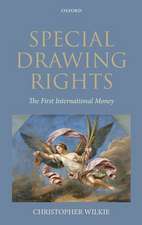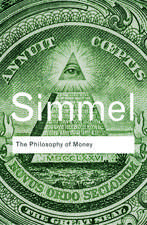Foreign Exchange Intervention as a Monetary Policy Instrument: Evidence for Inflation Targeting Countries: ZEW Economic Studies, cartea 23
Autor Felix Hüfneren Limba Engleză Paperback – dec 2003
Din seria ZEW Economic Studies
-
 Preț: 394.87 lei
Preț: 394.87 lei - 15%
 Preț: 644.18 lei
Preț: 644.18 lei -
 Preț: 379.30 lei
Preț: 379.30 lei -
 Preț: 387.75 lei
Preț: 387.75 lei - 15%
 Preț: 638.57 lei
Preț: 638.57 lei -
 Preț: 389.88 lei
Preț: 389.88 lei -
 Preț: 379.48 lei
Preț: 379.48 lei -
 Preț: 381.43 lei
Preț: 381.43 lei -
 Preț: 381.81 lei
Preț: 381.81 lei -
 Preț: 382.57 lei
Preț: 382.57 lei -
 Preț: 387.96 lei
Preț: 387.96 lei -
 Preț: 379.86 lei
Preț: 379.86 lei - 15%
 Preț: 643.34 lei
Preț: 643.34 lei -
 Preț: 390.25 lei
Preț: 390.25 lei - 15%
 Preț: 640.55 lei
Preț: 640.55 lei - 15%
 Preț: 632.70 lei
Preț: 632.70 lei -
 Preț: 385.84 lei
Preț: 385.84 lei - 15%
 Preț: 645.28 lei
Preț: 645.28 lei - 15%
 Preț: 640.88 lei
Preț: 640.88 lei -
 Preț: 386.61 lei
Preț: 386.61 lei -
 Preț: 380.07 lei
Preț: 380.07 lei - 15%
 Preț: 644.63 lei
Preț: 644.63 lei -
 Preț: 389.70 lei
Preț: 389.70 lei - 18%
 Preț: 945.79 lei
Preț: 945.79 lei - 15%
 Preț: 640.88 lei
Preț: 640.88 lei -
 Preț: 383.33 lei
Preț: 383.33 lei - 15%
 Preț: 638.11 lei
Preț: 638.11 lei - 15%
 Preț: 639.25 lei
Preț: 639.25 lei -
 Preț: 385.62 lei
Preț: 385.62 lei -
 Preț: 384.86 lei
Preț: 384.86 lei - 15%
 Preț: 638.57 lei
Preț: 638.57 lei - 15%
 Preț: 633.68 lei
Preț: 633.68 lei -
 Preț: 384.86 lei
Preț: 384.86 lei - 15%
 Preț: 635.15 lei
Preț: 635.15 lei - 15%
 Preț: 653.98 lei
Preț: 653.98 lei - 15%
 Preț: 636.30 lei
Preț: 636.30 lei -
 Preț: 382.18 lei
Preț: 382.18 lei - 15%
 Preț: 639.41 lei
Preț: 639.41 lei -
 Preț: 382.57 lei
Preț: 382.57 lei - 15%
 Preț: 639.59 lei
Preț: 639.59 lei -
 Preț: 389.49 lei
Preț: 389.49 lei - 15%
 Preț: 646.30 lei
Preț: 646.30 lei - 15%
 Preț: 638.43 lei
Preț: 638.43 lei - 15%
 Preț: 639.08 lei
Preț: 639.08 lei -
 Preț: 383.71 lei
Preț: 383.71 lei -
 Preț: 382.75 lei
Preț: 382.75 lei
Preț: 382.18 lei
Nou
Puncte Express: 573
Preț estimativ în valută:
73.14€ • 76.08$ • 60.38£
73.14€ • 76.08$ • 60.38£
Carte tipărită la comandă
Livrare economică 14-28 aprilie
Preluare comenzi: 021 569.72.76
Specificații
ISBN-13: 9783790801286
ISBN-10: 3790801283
Pagini: 188
Ilustrații: IX, 175 p.
Dimensiuni: 155 x 235 x 10 mm
Greutate: 0.28 kg
Ediția:Softcover reprint of the original 1st ed. 2004
Editura: Physica-Verlag HD
Colecția Physica
Seria ZEW Economic Studies
Locul publicării:Heidelberg, Germany
ISBN-10: 3790801283
Pagini: 188
Ilustrații: IX, 175 p.
Dimensiuni: 155 x 235 x 10 mm
Greutate: 0.28 kg
Ediția:Softcover reprint of the original 1st ed. 2004
Editura: Physica-Verlag HD
Colecția Physica
Seria ZEW Economic Studies
Locul publicării:Heidelberg, Germany
Public țintă
ResearchCuprins
1 Introduction.- 1.1 Background.- 1.2 Approach to the Problem and Research Strategy.- 1.3 Structure of the Analysis.- 2 The Conventional View on Inflation Targeting.- 2.1 Definition and Elements of Inflation Targeting.- 2.2 Adoption of Inflation Targeting.- 2.3 A Basic Model for (Closed-Economy) Inflation Targeting.- 2.4 Open Economy Inflation Targeting.- 3 Uncovered Interest Parity in Practice.- 3.1 The Rationale of Interest Parity.- 3.2 An Empirical Test for Inflation Targeting Countries.- 3.3 Consequences of the Failure of UIP.- 4 Sterilised Interventions as an Additional Policy Instrument.- 4.1 Explaining and Interpreting Sterilised Interventions.- 4.2 The Effectiveness of Sterilised Interventions: A Review of the Literature.- 5 Sterilised Foreign Exchange Intervention in Practice.- 5.1 Foreign Exchange Reserves as an Intervention Proxy.- 5.2 Intervention Activity in Inflation Targeting Countries.- 5.3 The Use of Interventions as an Additional Policy Instrument.- 5.4 Short Case Studies of the Country Experiences.- 6 Performance of Inflation Targeting: An Evaluation.- 7 Conclusion and Outlook.- List of Figures.- List of Tables.
Textul de pe ultima copertă
Foreign exchange intervention is frequently being used by central banks in countries which have a floating exchange rate. Most theoretical monetary policy models, however, do not take this phenomenon into account. This book contributes to closing this gap between theory and practice by interpreting foreign exchange intervention as an additional monetary policy instrument for inflation targeting central banks. In-depth empirical analyses of the foreign exchange operations and interest rate policy of five inflation targeting countries (Australia, Canada, New Zealand, Sweden and the United Kingdom) demonstrate how foreign exchange intervention is used in practice.










